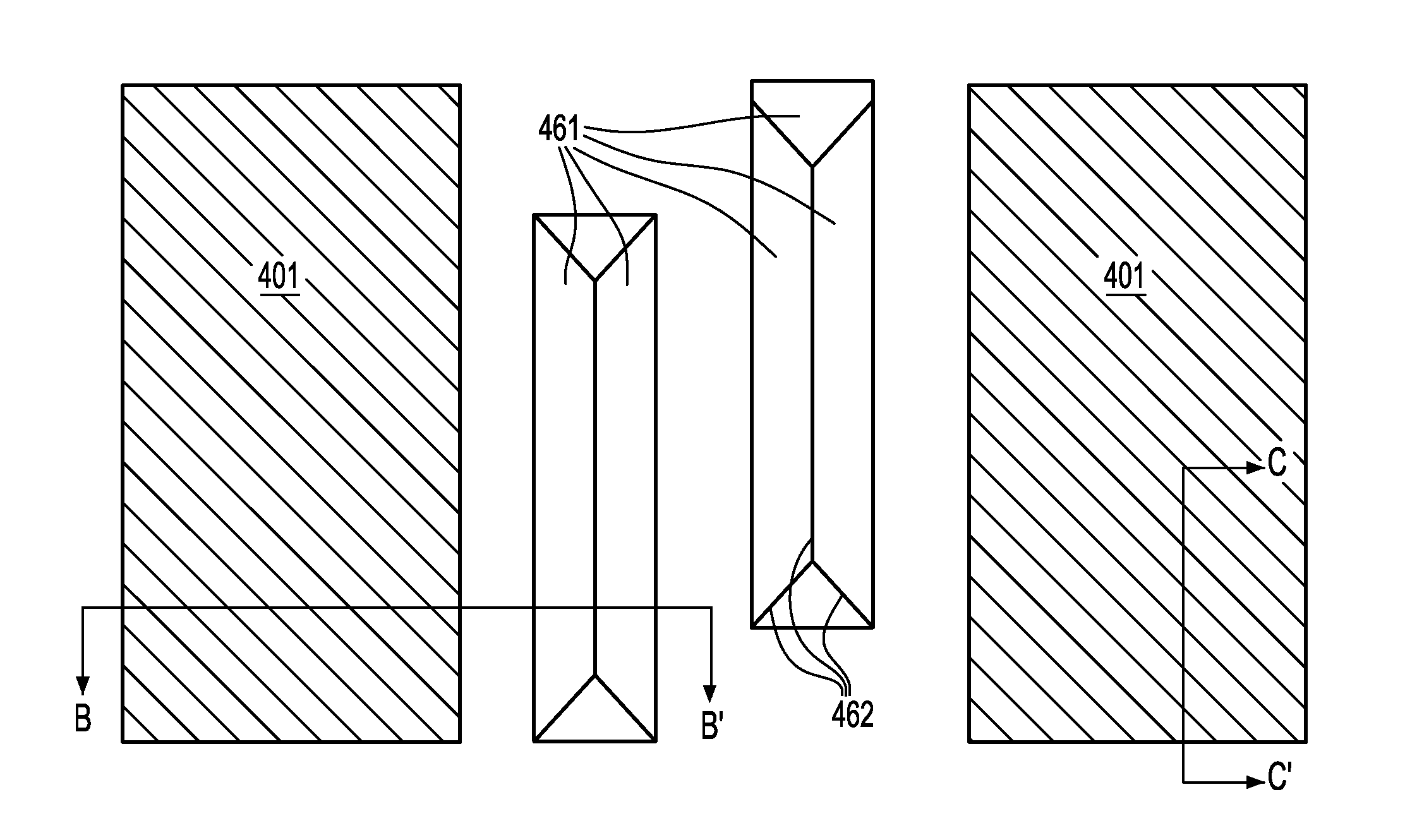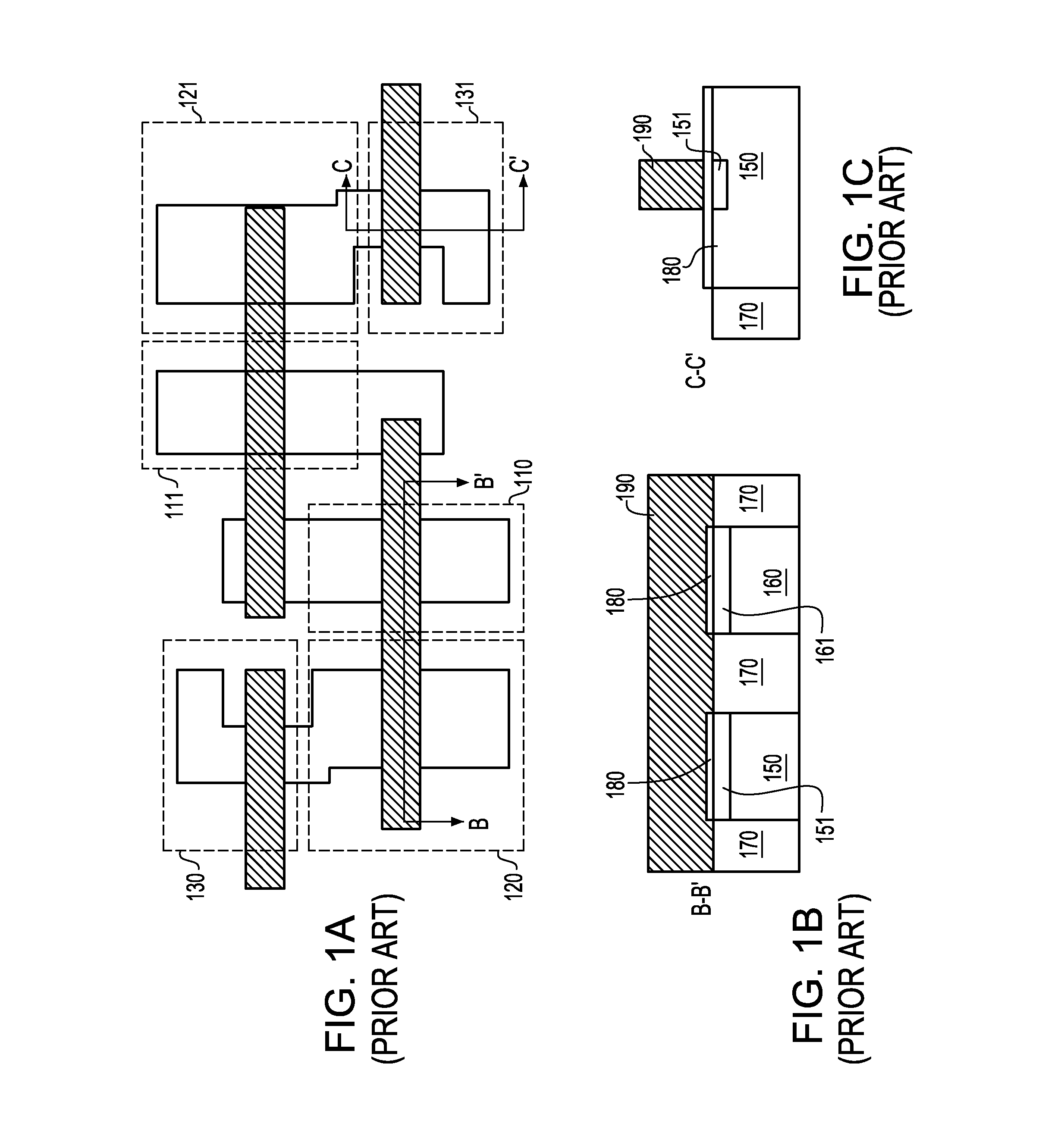Structure and method for dual surface orientations for CMOS transistors
a technology of cmos transistor and surface orientation, which is applied in the direction of transistors, semiconductor devices, electrical equipment, etc., can solve the problems of reducing the speed of circuit operation, deteriorating circuit stability, and performance degradation, so as to improve the performance of cmos devices and minimize the negative consequences of the manufacture process
- Summary
- Abstract
- Description
- Claims
- Application Information
AI Technical Summary
Benefits of technology
Problems solved by technology
Method used
Image
Examples
first embodiment
[0095]According to the present invention, the substrate orientation is (100) , which is the optimal surface orientation for NFET devices while being the least desired orientation for PFET devices. The surface of the STI 370 may optionally be recessed by etching as shown in FIGS. 8A-8C to reduce topographic variations in the later stages of processing, particularly when the gate needs to be lithographically patterned. The etching process may utilize a wet etch or a reactive ion etch (RIE) to provide desired recess depth of the STI 370.
[0096]The NFET body 350 is masked with masking material 401 as schematically shown in FIGS. 9A-9C. The top surfaces of the unmasked PFET body 360 in FIGS. 7A-7C are subjected to etchant that produces surface orientations other than (100) . The resulting structure is described in FIGS. 9A-9C, which shows the etched PFET body 460 with facets 461 and ridges 462 where two facets with different surface orientations meet.
[0097]In FIG. 9A, the two rectangular ...
fourth embodiment
[0115]According to the present invention, the substrate is a (100) silicon substrate. The NFET body 350 as shown in FIGS. 7A-7C is masked with a masking material 601. The PFET body 360 is recessed by exposing them to etchant, either in a wet etch process or in a reactive ion etch process. The resulting structure with recessed PFET body 660 with a recessed silicon surface 659 are shown in FIGS. 13A-13C along with the masking material 601, an STI 370, the NFET body 350.
[0116]This is followed by a suitable surface pretreatment and then a selective epitaxy process that grows facets with surface orientations other than {100} orientations. The surface orientations of such facets are preferably {110}, {111}, {211}, {221} or {311}, and most preferably {110}. The resulting structure is described in FIGS. 14A-14C, which shows selective epitaxially grown PFET body 660 with facets 661 and ridges 662 where two facets with different surface orientations meet. After the formation of the selective ...
fifth embodiment
[0119]According to the present invention, the substrate is a (110) silicon substrate. The PFET body 360 as shown in FIGS. 7A-7C is masked with a masking material. The NFET body in FIGS. 7A-7C is recessed by exposing them to etchant, either in a wet etch process or in a reactive ion etch process. This results in structures with recessed NFET body with a recessed silicon surface.
[0120]As in the fourth embodiment of the present invention, this is followed by a suitable surface pretreatment and then a selective epitaxy process that grows facets with surface orientations other than {110} orientations. The surface orientations of such facets are preferably {100}, {111}, {211}, {221} or {311}, and most preferably {100}. After the formation of the selective epitaxially grown NFET body, the masking material is removed. The process flow then follows the same processing steps as described in the first embodiment. The same requirement applies to the masking material in the fifth embodiment as i...
PUM
 Login to View More
Login to View More Abstract
Description
Claims
Application Information
 Login to View More
Login to View More - R&D
- Intellectual Property
- Life Sciences
- Materials
- Tech Scout
- Unparalleled Data Quality
- Higher Quality Content
- 60% Fewer Hallucinations
Browse by: Latest US Patents, China's latest patents, Technical Efficacy Thesaurus, Application Domain, Technology Topic, Popular Technical Reports.
© 2025 PatSnap. All rights reserved.Legal|Privacy policy|Modern Slavery Act Transparency Statement|Sitemap|About US| Contact US: help@patsnap.com



